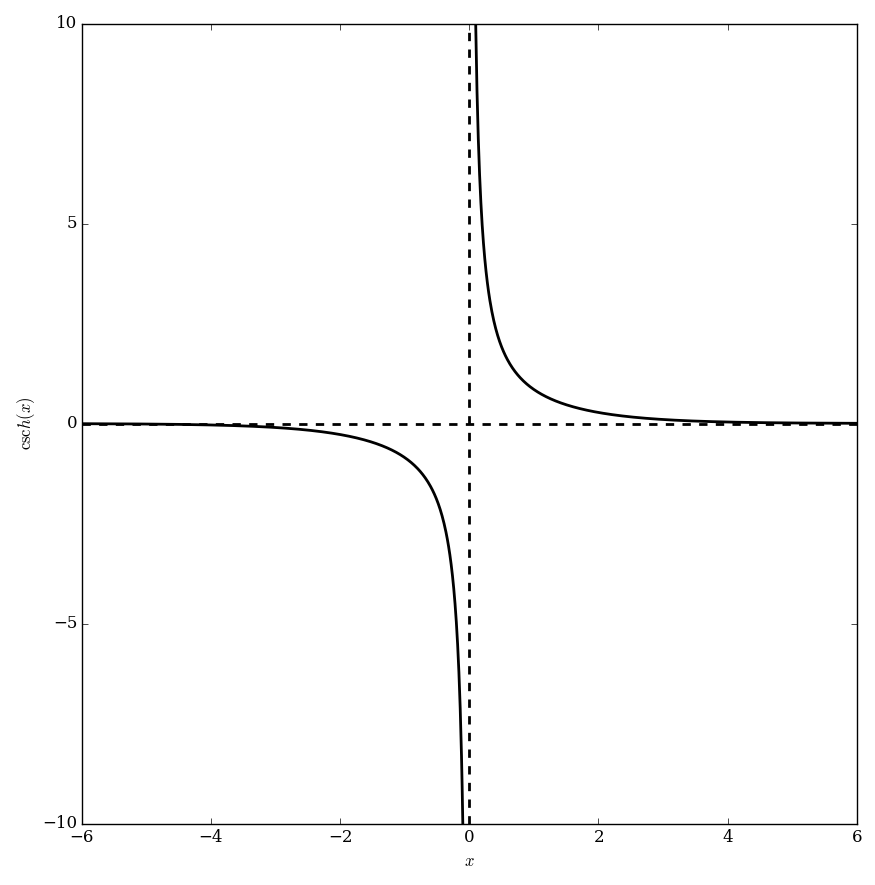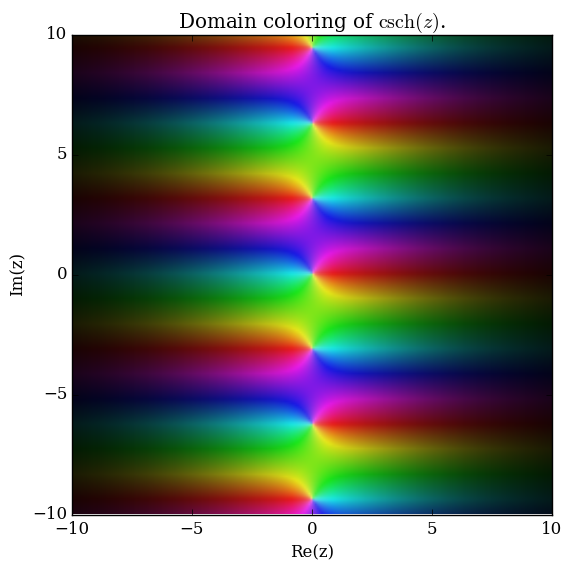Csch
The hyperbolic cosecant function $\mathrm{csch} \colon \mathbb{R} \setminus \{0\} \rightarrow \mathbb{R} \setminus \{0\}$ is defined by $$\mathrm{csch}(z)=\dfrac{1}{\sinh(z)},$$ where $\sinh$ denotes the hyperbolic sine. Since this function is one-to-one, its inverse function, the inverse hyperbolic cosecant function is clear.
Domain coloring of analytic continuation of $\mathrm{csch}$.
Contents
Properties
Theorem
The following formula holds: $$\dfrac{\mathrm{d}}{\mathrm{d}z} \mathrm{csch}(z)=-\mathrm{csch}(z)\mathrm{coth}(z),$$ where $\mathrm{csch}$ denotes the hyperbolic cosecant and $\mathrm{coth}$ denotes the hyperbolic cotangent.
Proof
From the definition, $$\mathrm{csch}(z) = \dfrac{1}{\mathrm{sinh}(z)}.$$ Using the quotient rule, the derivative of sinh, and the definition of $\mathrm{coth}$, we compute $$\begin{array}{ll} \dfrac{\mathrm{d}}{\mathrm{d}z} \mathrm{csch}(z) &= \dfrac{0-\mathrm{cosh}(z)}{\mathrm{sinh}^2(z)} \\ &= -\mathrm{csch}(z)\mathrm{coth}(z), \end{array}$$ as was to be shown.
References
Theorem
The following formula holds: $$\displaystyle\int \mathrm{csch}(z)\mathrm{d}z = \log\left(\tanh\left(\frac{z}{2}\right)\right)+C,$$ where $\mathrm{csch}$ denotes the hyperbolic cosecant, $\log$ denotes the logarithm, and $\tanh$ denotes the hyperbolic tangent.
Proof
References
Theorem
The following formula holds: $$\cot(\mathrm{gd}(x))=\mathrm{csch}(x),$$ where $\cot$ is the cotangent, $\mathrm{gd}$ is the Gudermannian, and $\mathrm{csch}$ is the hyperbolic cosecant.
Proof
References
Theorem
The following formula holds: $$\mathrm{csch}(\mathrm{gd}^{-1}(x))=\cot(x),$$ where $\mathrm{csch}$ is the hyperbolic cosecant, $\mathrm{gd}^{-1}$ is the inverse Gudermannian, and $\cot$ is the cotangent.

